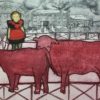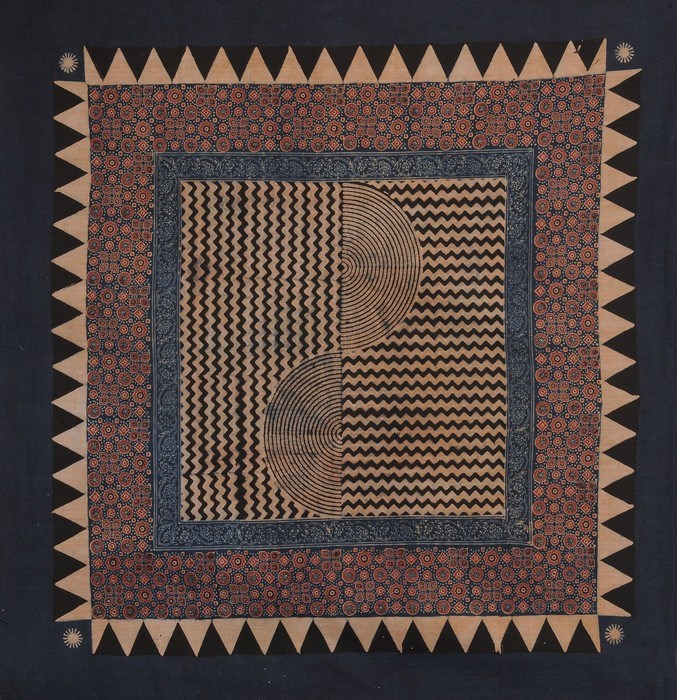Shelly Jyoti
Narratives: An Allusion to Stitches
Ajrakh resist printing & dyeing on khadi fabric
46 x 46 in.
As a textile artist, my work seeks to address historical iconographic elements present within the context of modern Indian history. My work explores two key questions, In the Twenty-First century, can the practice of non-violence be an important thread that enables us to promote greater peace both within nations and across the globe? And how can textiles, both as material objects and because of their artistic form, be used to stitch together communities?
Spinning has a long history in Indian textiles along with cotton cloth trading and ruling the world. In early centuries, spinning as word and image, stands metonymically for much of the politics of self-sufficiency, swadeshi, and production of homespun cloth. In 1909, in an anti colonial movement Gandhi decided to revive a craft of hand spinning of cotton into thread as an economic and political activity that could also bring together the diverse population of India. The spinning wheel had only one common image of charkha from 1775-1909 but Gandhi initiated and promoted many different varieties of the Charkhas during early 20th century. During my research for ‘Indigo Narratives’ (2009-17). Gandhi’s first non-violent experiment (Champaran movement 1917-18), I came across many references of different looking spinning wheels that I attempted to translate them visually, utilizing Ajrakh printing textile traditions on khadi as my interpretation.



